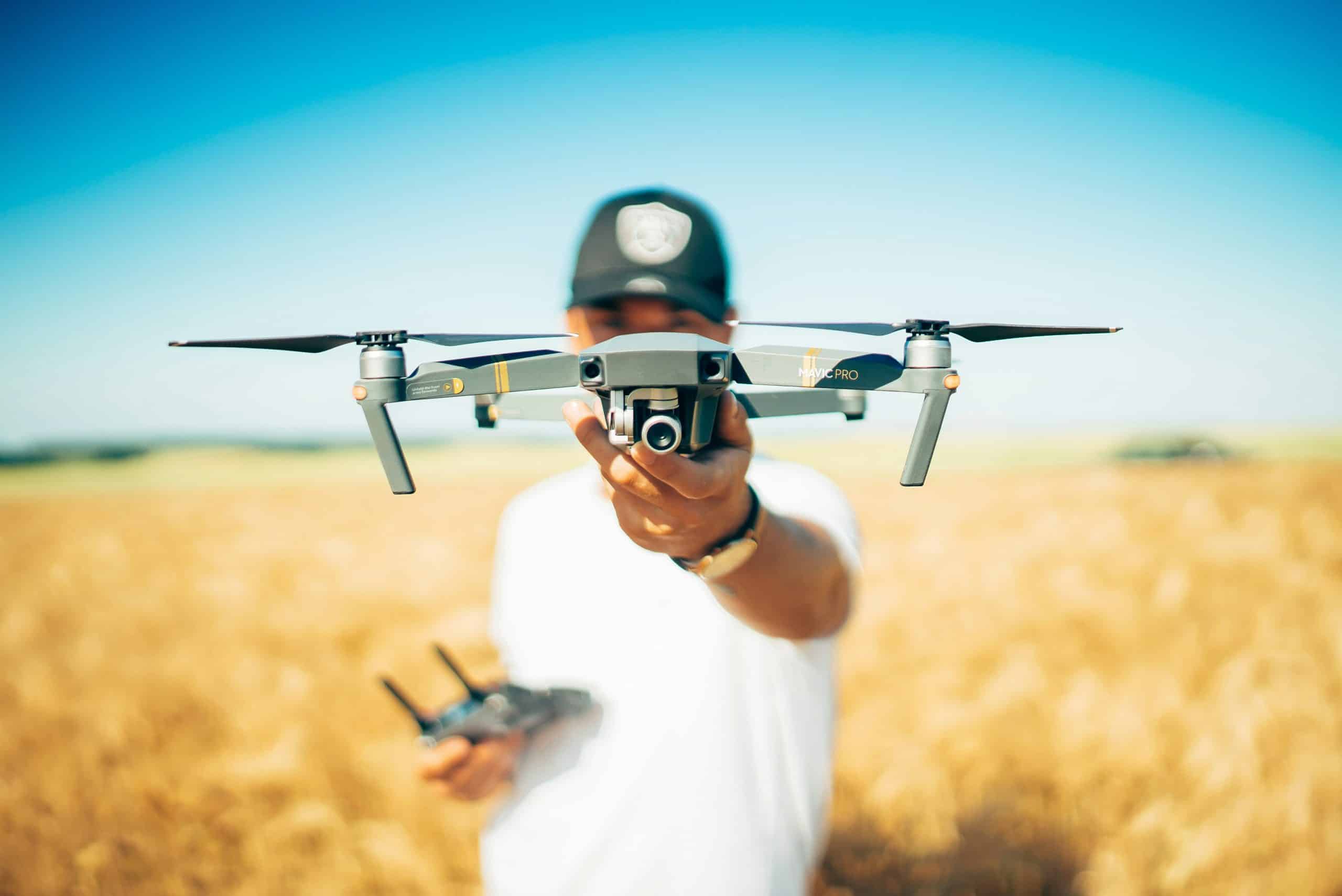How Are Drones Being Used for Personal Land Surveying and Mapping?

In the ever-evolving world of technology, ground-breaking innovations continue to redefine and revolutionize various sectors. One of such ground-breaking innovation is the use of drones. From capturing breathtaking aerial footage to making speedy deliveries, drones have proven to be a versatile tool of the modern age. However, beyond these more common applications, drones are increasingly being used for personal land surveying and mapping. But, how exactly are they being used? Let’s delve into this fascinating application of drone technology.
The Role of Drones in Land Surveying
Land surveying is an essential practice, particularly in the construction industry. Traditionally, it involves a laborious, time-consuming process of measuring distances and angles between different land points. However, the emergence of drone technology has significantly streamlined this process.
Avez-vous vu cela : What Are the Best Techniques for Capturing Professional Quality Drone Footage?
By providing an aerial perspective, drones allow surveyors to accurately capture the state of the land. Equipped with specialized cameras, drones can take high-resolution images of a site, providing a wealth of data for analysis. This aerial perspective enables surveyors to gain a comprehensive understanding of the terrain and identify potential issues that might not be apparent from the ground level.
Moreover, the use of drones for land surveying has significantly reduced the amount of time required for surveys. It is now possible to survey large tracts of land in a fraction of the time it took using traditional methods.
Sujet a lire : How Are Thermal Imaging Cameras Being Incorporated into Hobby Drones?
Drone Mapping: A New Level of Precision
The cornerstone of effective land surveying is accurate mapping. In the past, this required painstaking manual measurements and calculations. Today, drone technology has revolutionized this process.
Using sophisticated software, images captured by drones are converted into precise maps and models. These maps are incredibly detailed, providing a true-to-life representation of the land. This level of detail ensures an unmatched level of accuracy, essential for planning and executing construction projects.
Furthermore, drone mapping allows for real-time data collection and analysis. This is particularly useful in situations where site conditions change rapidly, such as following a natural disaster. Drone mapping provides an up-to-date picture of the land, enabling swift, informed decision making.
Ensuring Accuracy with Drone Technology
Accuracy is the name of the game in land surveying and mapping. Drones, coupled with the right software, can deliver this to an impressive degree.
Onboard sensors and GPS technology ensure that drones can maintain a consistent altitude and position, allowing for consistent image capture. This, combined with high-resolution cameras, results in extremely detailed and accurate datasets.
Post-flight, this data can be processed using specialist software. This software corrects any errors or distortions in the images, ensuring the resulting maps and models are as accurate as possible. This level of accuracy is vital in planning and executing projects, reducing the risk of costly mistakes.
The Potential of Drones in Personal Land Surveying
While drones have already transformed commercial land surveying and mapping, they also hold considerable promise for personal land surveying.
Drones can help homeowners and landowners understand their property better. They can provide detailed maps for planning landscaping projects or home extensions. They can also be used to monitor property boundaries, aiding in resolving any potential disputes.
Moreover, drone technology can make personal land surveying more accessible. With training, individuals can operate drones and use software to create their own accurate maps and models. This opens up land surveying to a wider audience, enabling more people to benefit from this vital service.
In essence, the adoption of drones in land surveying and mapping has revolutionized the way we understand and interact with our land. It offers an efficient, accurate, and accessible means of exploring and documenting the world around us. Through the continuous advancement of drone technology, we can anticipate even more impressive capabilities in the future. The sky is, quite literally, the limit.
Revolutionizing Data Collection with Drone Surveys
A crucial aspect of land surveying and mapping is comprehensive data collection. The introduction of drones in this field has greatly enhanced the speed and quality of collecting data from different terrains.
Drone surveys can produce detailed topographic maps and models to aid in the planning and implementation of various projects, such as construction and agriculture. Using drones, surveyors can quickly capture high-resolution aerial images of a site. These images can then be processed into a point cloud, offering a unique and detailed three-dimensional view of the area.
What sets drone surveys apart from traditional surveying methods is their ability to capture data from inaccessible or hazardous locations. Thanks to their compact size and maneuverability, drones can reach areas that may pose significant risks to human surveyors or are simply unreachable through other methods. This capability significantly expands the areas that can be surveyed, offering a more comprehensive overview of a site.
Moreover, drones can perform multiple surveys over time, which is particularly useful for monitoring changes in the land. The captured data can be compared to previous surveys, providing valuable insights into how a site is evolving. This feature is of prime importance in sectors like construction, where regular monitoring is required to ensure the project’s progress aligns with the planned schedule and design.
The transformative impact of drone technology in data collection can’t be overstated. Its ability to deliver high-quality data in real-time makes it an indispensable tool for land surveying and mapping.
Ground Control: Enhancing Accuracy with Mapping Software
Mapping software plays a pivotal role in ensuring the accuracy of drone surveying and mapping. Combined with ground control points (GCPs), these software can significantly increase the precision of drone surveys.
GCPs are marked points on the ground that have a known geographic location. When a drone takes an aerial image, these GCPs are used as reference points, helping the mapping software to correct any errors in the image caused by factors such as camera angle or drone movement. This process, known as georeferencing, ensures that the resulting maps and models are highly accurate and reliable.
Several mapping software, designed specifically for drone surveys, are available today. They use sophisticated algorithms to process the high-resolution images captured by drones, converting them into different representations of the land such as Digital Elevation Models (DEMs), Orthomosaics, and 3D point clouds.
The use of ground control and mapping software, therefore, ensures that the drone data is not just comprehensive, but accurate and reliable as well. This level of precision, made possible by drones, is transforming the landscape of land surveying and mapping.
Conclusion: The Future of Personal Land Surveying
The integration of drone technology into land surveying and mapping has changed the game. It has not just made the process more efficient and accurate but also made it more accessible to individuals.
The ability of drones to capture detailed, high-resolution images, combined with advanced mapping software, means that even complex land surveys can now be performed easily. With drone surveys, homeowners and landowners can better understand their property, plan projects more effectively, and resolve boundary disputes.
Furthermore, the evolution of drone technology shows no signs of slowing down. As drones become more advanced, we can expect even greater accuracy, efficiency, and data quality. With the prospect of even more sophisticated mapping software and improved capabilities, the potential applications of drone surveying and mapping are expanding rapidly.
In the end, drone technology is proving to be a powerful tool in personal land surveying, turning what was once a time-consuming and complex task into a streamlined and accessible process. In the realm of land surveying and mapping, drones are not just the present – they are the future.
